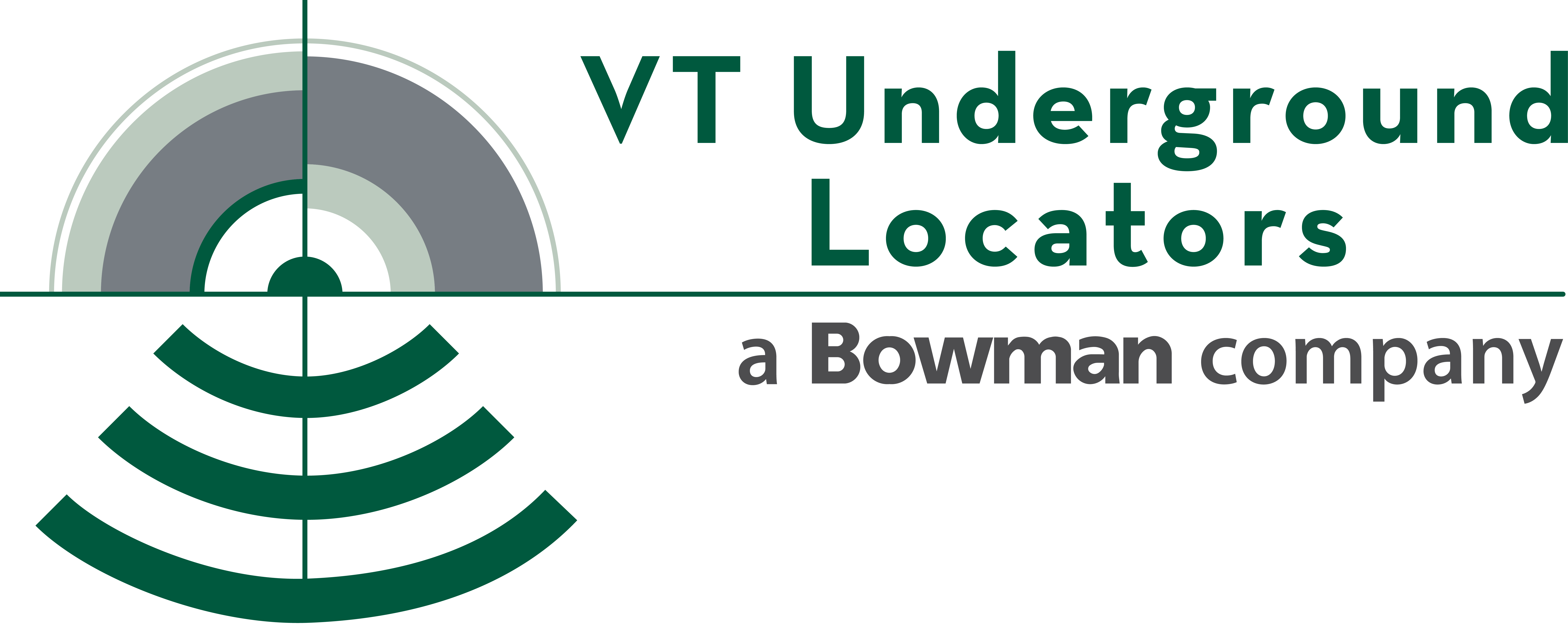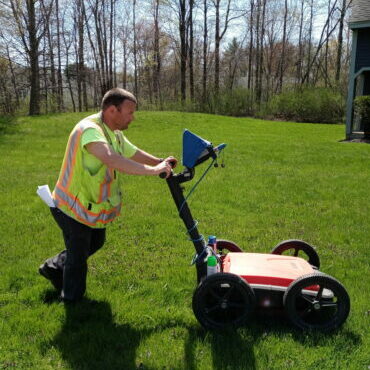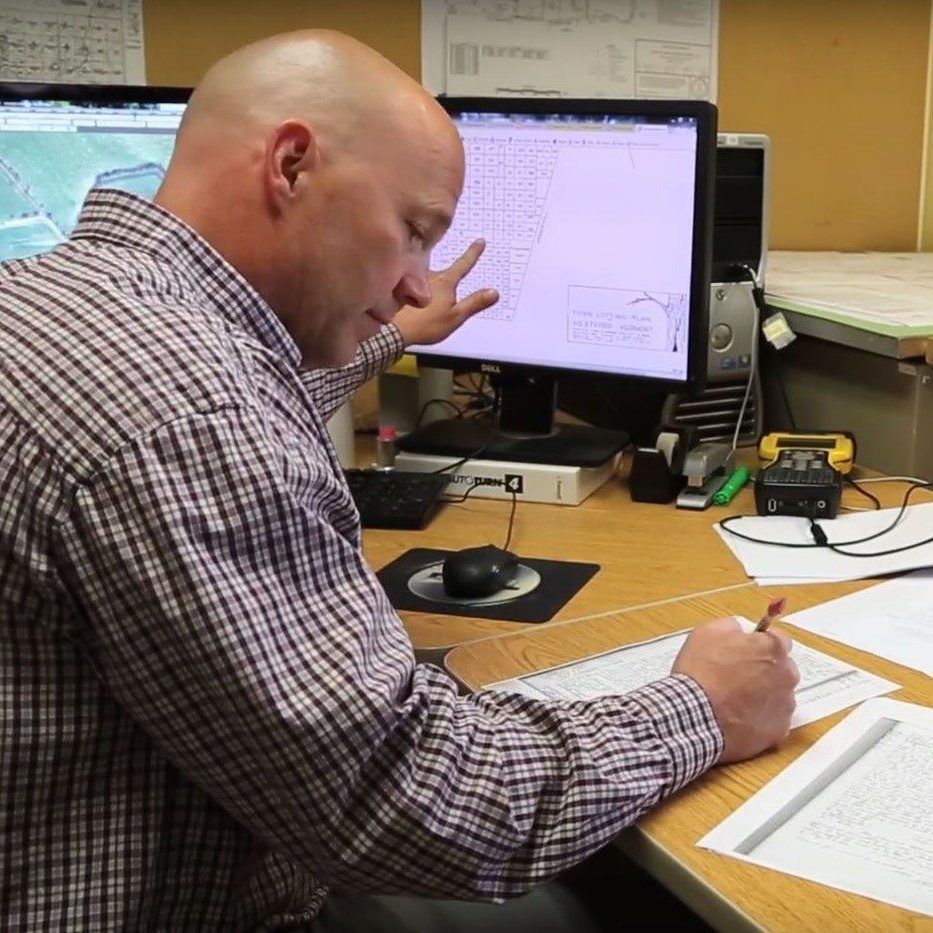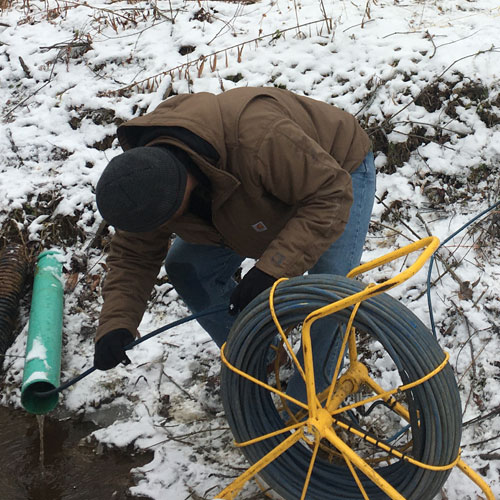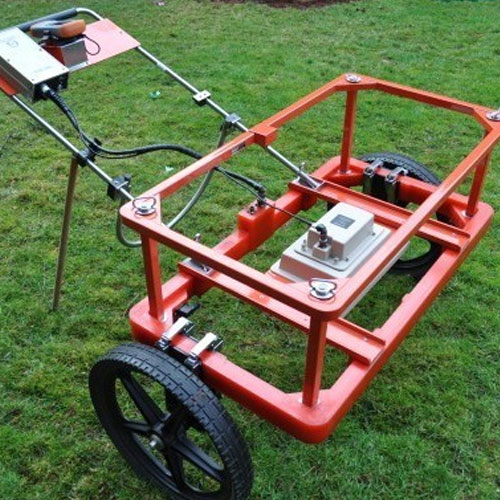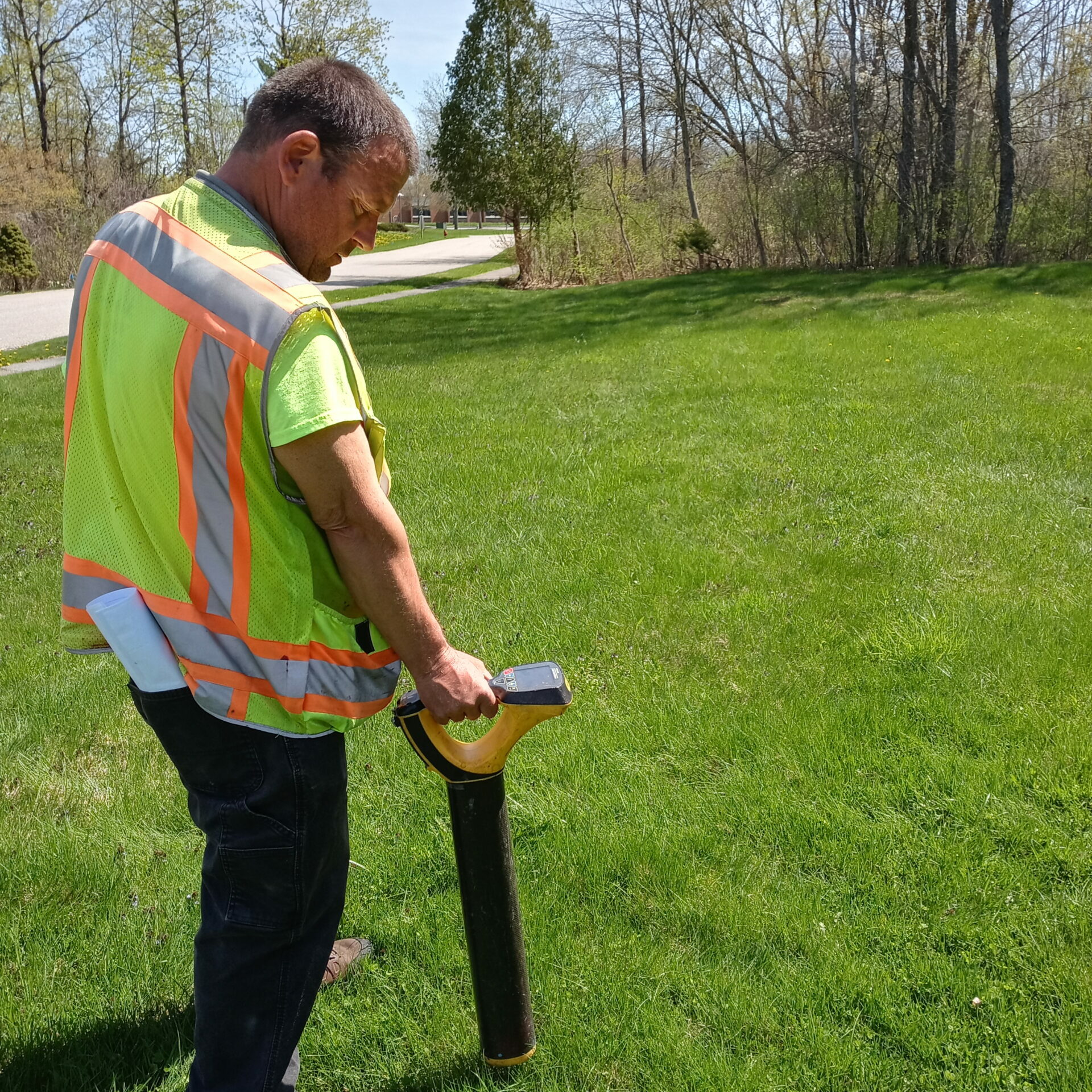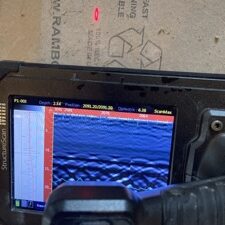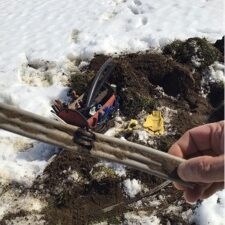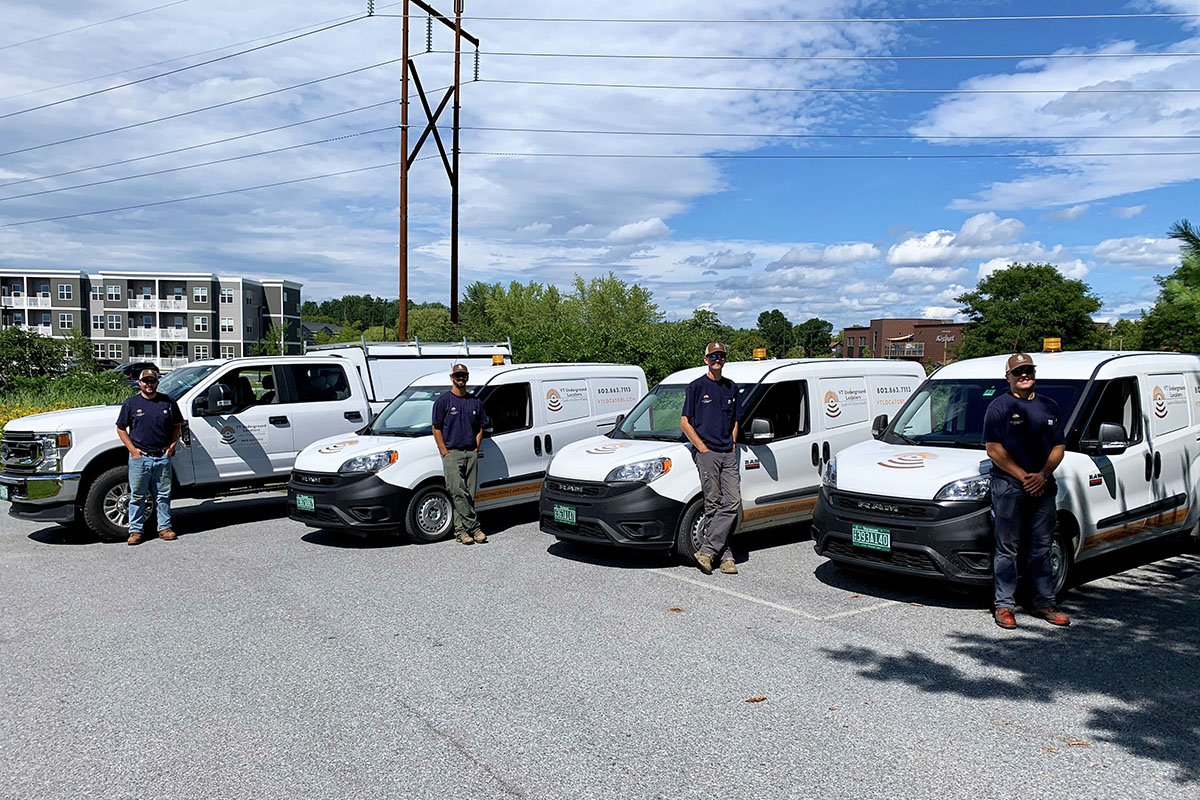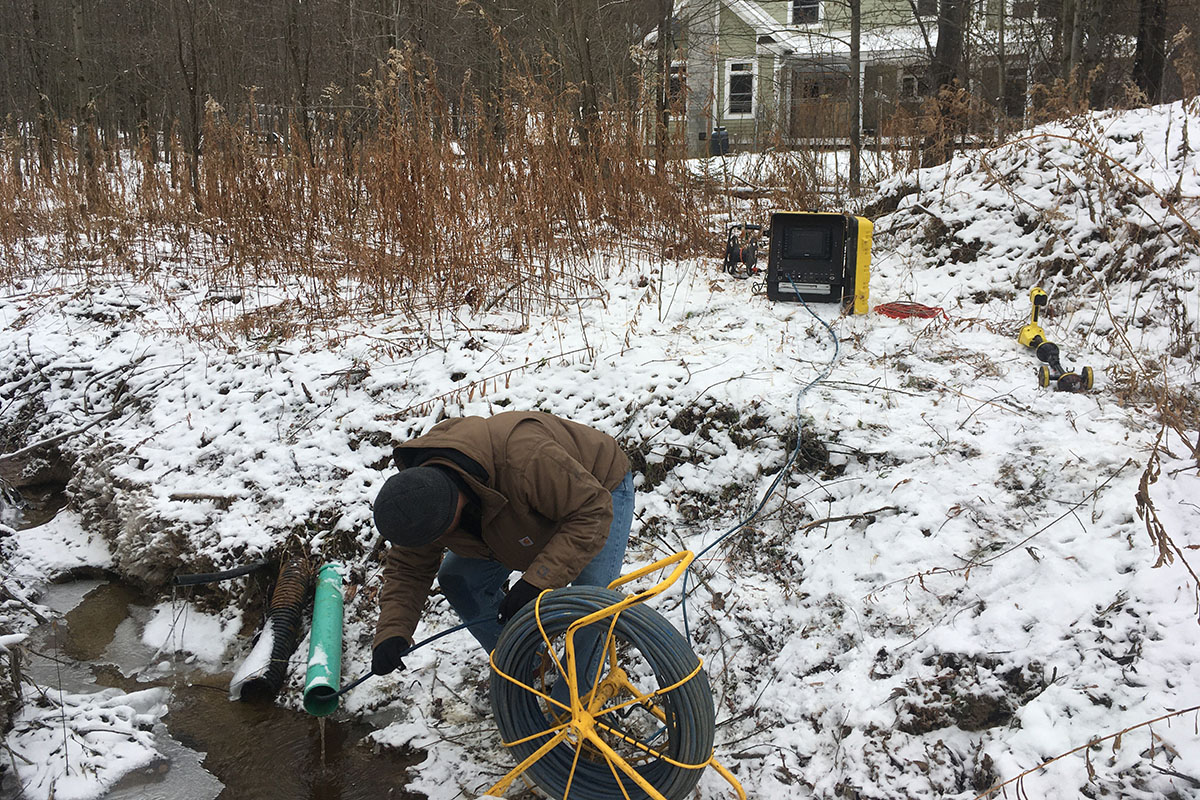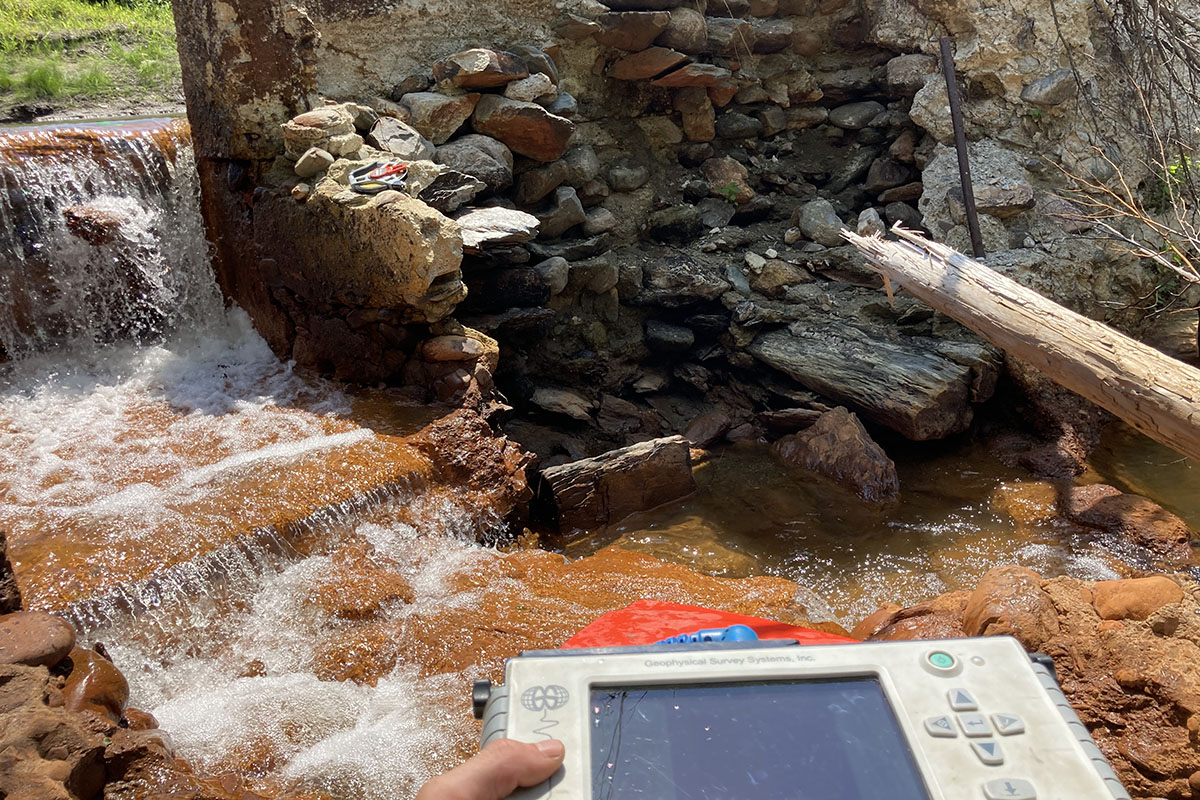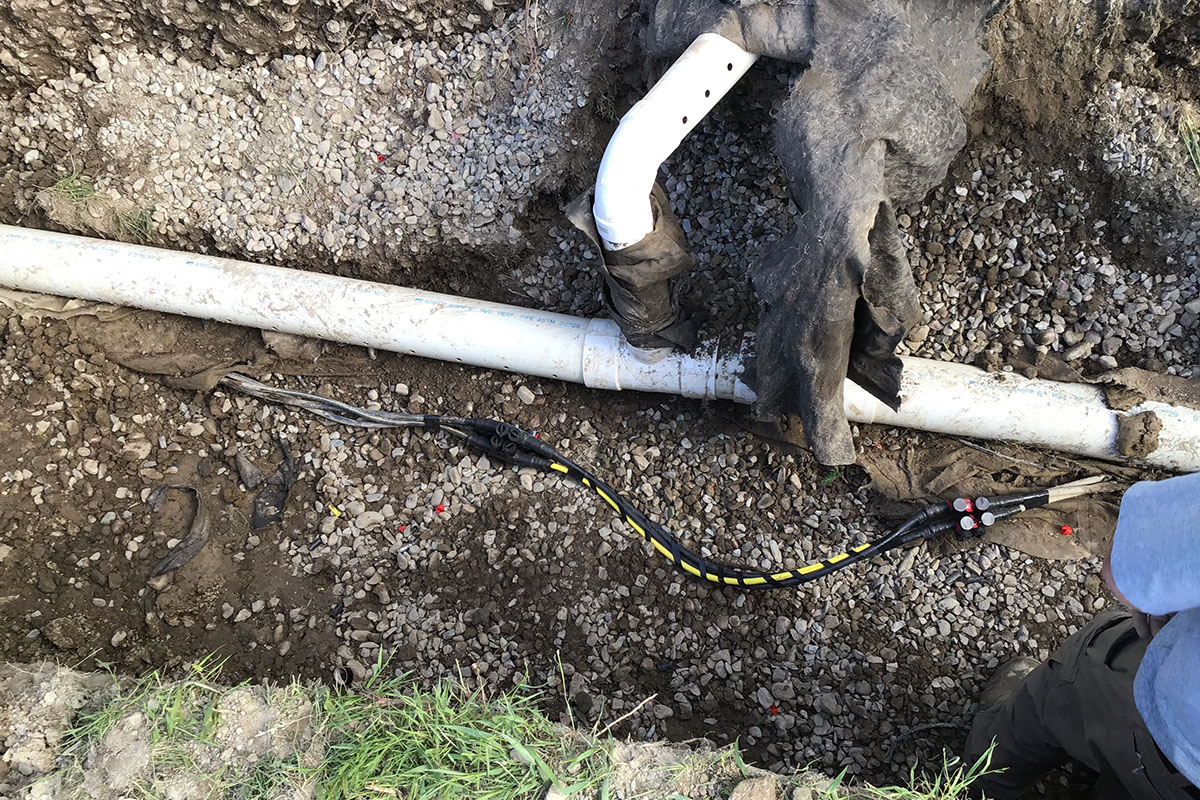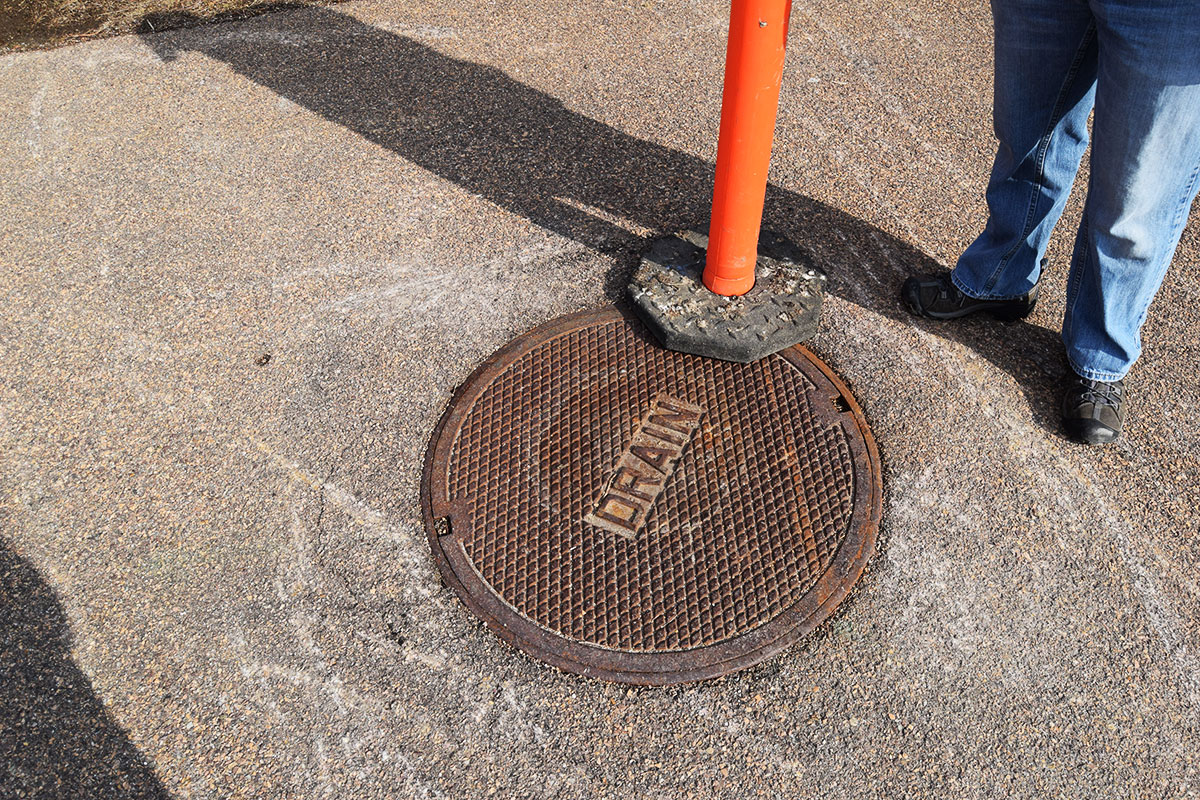Yes, we use a Geonics EM61 Mark II, which is a powerful time domain metal detector that is able to detect both ferrous and non-ferrous metal using a single transmitter coil and two receiver coil. It generates a magnetic field from the transmitter inducing eddy currents in nearby metal objects. The Geonics EM-61 Mark II detects a single 200-litre (55 gal) drum at a depth of over 3 meters (10 feet) beneath the instrument, yet is relatively insensitive to nearby cultural interference, such as fences, buildings and power lines. Response is a single, sharply defined peak, greatly facilitating quick & accurate location of the target. Depth of the target can usually be estimated from the width of the response. In addition to our ground penetrating radar, and other metal detecting equipment we can accurately locate metal objects located below the surface. We also use Trimble RTK GPS to locate above or below ground features and can produce high quality GIS or AutoCAD maps. All our work is done under the supervision of a (VT and NH) registered land surveyor.
Who may participate voluntarily, and what they must mark, varies from state to state. For instance, power companies are ALL required to participate in all states. However, what they mark varies.
For example, in Vermont, most power companies only mark from the street to the meter. This means that if your meter is on a pole down by the road, the line from that pole up to your house will not be marked. But the telephone may be marked all the way to the house.
In New York, the secondary power, power after the transformer but before the meter, may not get marked once it crosses on to private property.
Usually, municipal sewer and water are not required to participate; they usually do on a voluntary basis though. In some places, utilities will provide positive response, eg; marking NO FPTel or NO VTGas to let you know that they’ve been there. Other places and utilities do not have this requirement.
In general, Dig Safe is an invaluable program and protects many lives and infrastructure. It is a great starting point and the LAW – SO ALWAYS CALL 811 or visit www.digsafe.com BEFORE YOU DIG.
At Vermont Underground Locators we go above and beyond the limitations of Dig Safe and can further assist you with locating private utilities within your work area to the best of our ability and within the limitations of our equipment. Our experienced locating technicians can also survey and map your utilities for future reference. We carefully document our work and can be an invaluable part of your construction or design project. In addition we can assist with finding power faults, or doing camera inspection services on various buried utilities.
